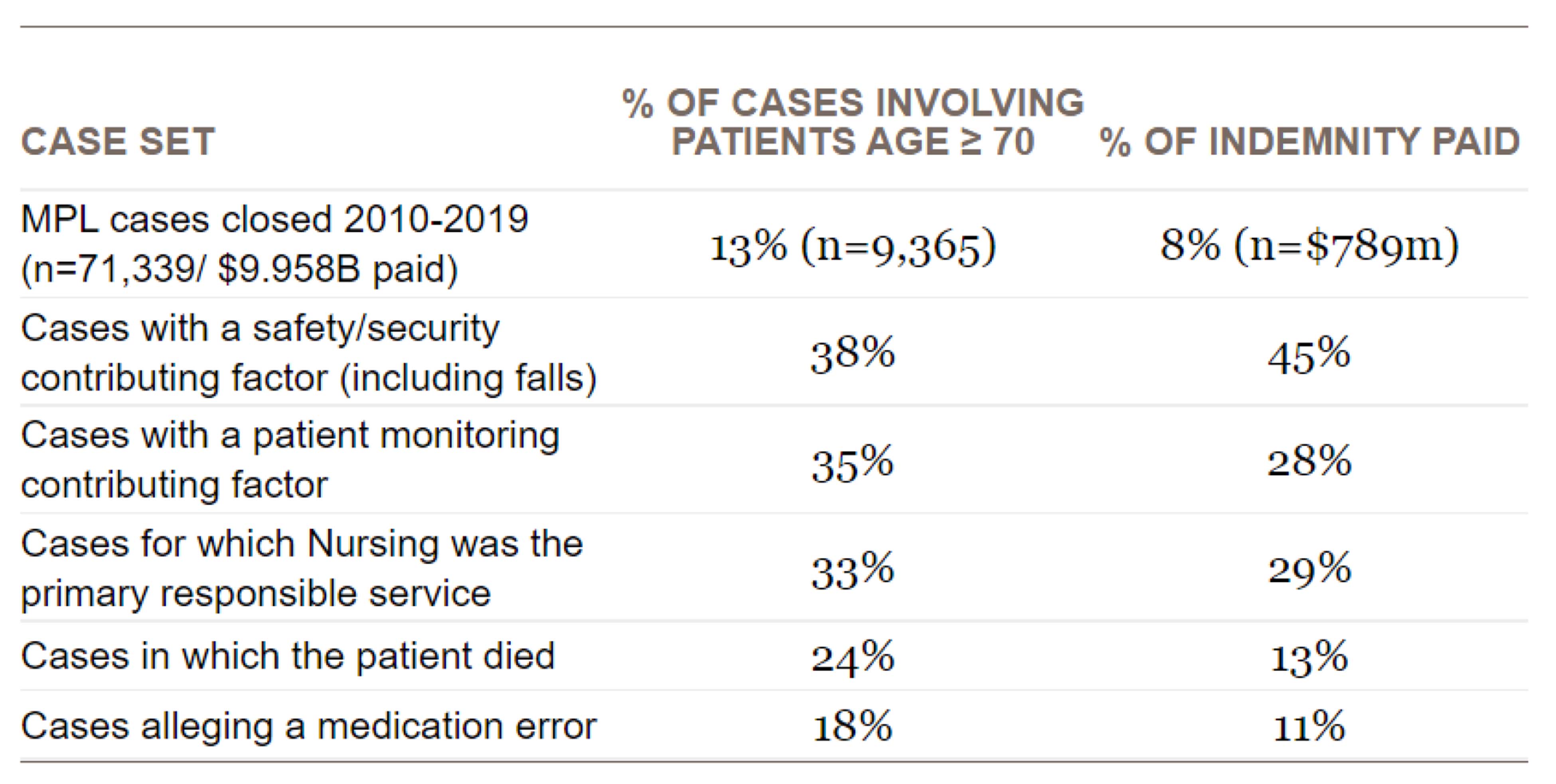Newsletter
An Increasing MPL Cohort
Aug 31, 2021
While the 2020 U.S. census data regarding age trends won’t be released until 2022, the age ≥65 segment is expected to grow from its current 17% to 22% by 2050 (it was 8% in 1950).1 That age group accounts for 36% of health care spending, a proportion also expected to grow in the coming decades.2 And although the overall frequency of medical professional liability (MPL) cases is on a lengthy downward trend, the steady population growth may serve to increase the share of malpractice cases involving older patients.
CRICO’s national comparative benchmarking system captures data on roughly one-third of U.S. MPL cases, including the patient’s age at the time of the triggering event. For claims made from 2010-2019, 15% involved patients age 70 or older, with a slight upward trend (patients ages 40-69 account for 53% of cases). For 71,339 MPL cases closed during the same time period, patients age 70 and above account for 13%. The average indemnity payment for all age groups was $395K, with the total paid out just shy of $10B. The 9,365 cases involving the elderly bracket accounted for 8% of that total (average=$229K). For case sets with certain characteristics, however, patients over age 70 are notably more vulnerable.

While those characteristics might be intuitive, they underscore the need to consider some of the challenges faced by even the healthiest within this age group. In addition to the ubiquitous risk of falling, these include:
- complex medication regimens
- reduced vision, hearing
- arthritis
- navigating electronic devices
- failing memory
- isolation
Focusing risk management resources on these particular risks for this growing patient population should reap patient safety and financial benefits for decades to come.
Sources
Latest News from CRICO
Postpartum Malpractice Claims: Can We Understand Preventable Harms and Socioeconomic Factors?

